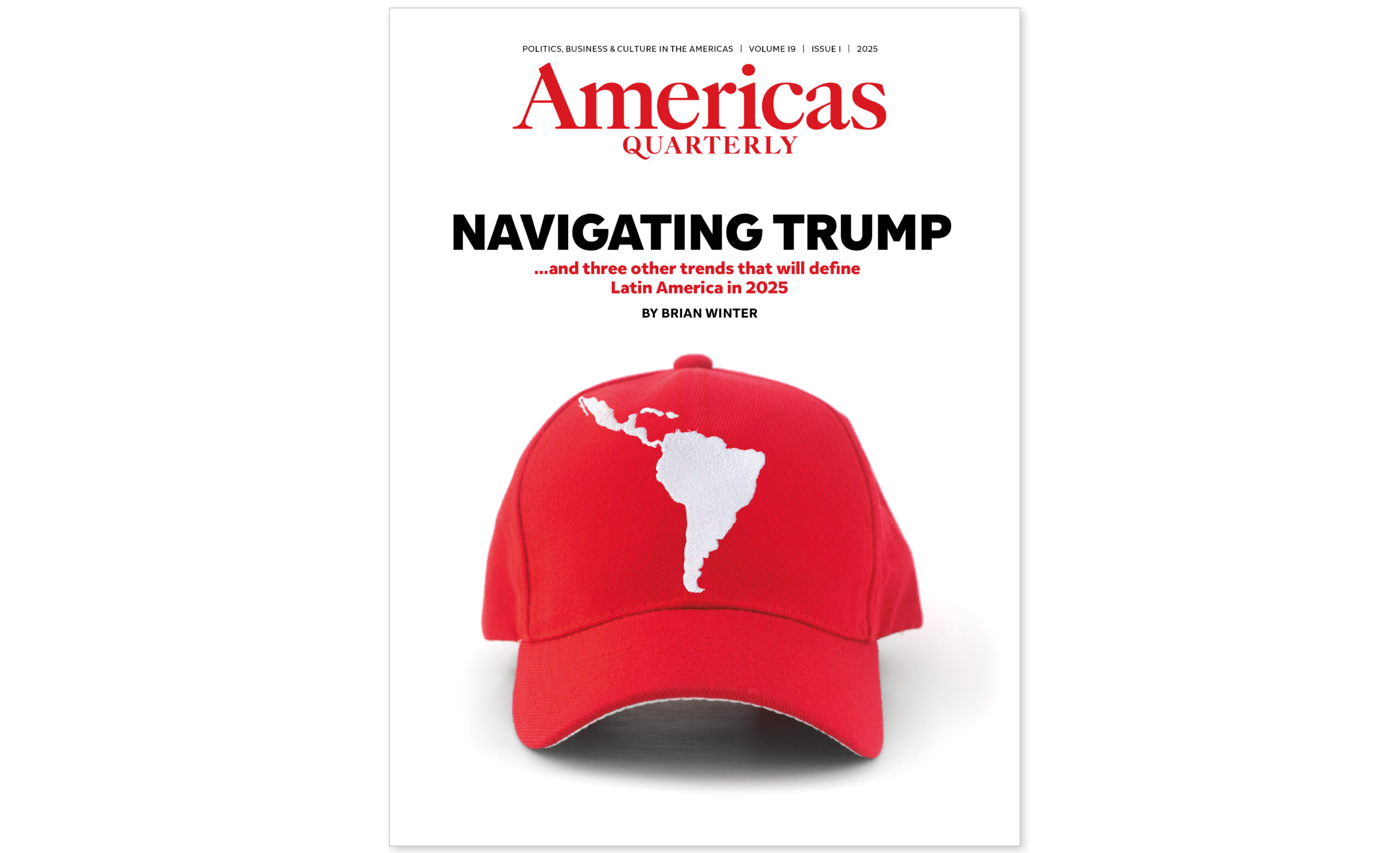This article is adapted from AQ’s special report on trends to watch in Latin America in 2025
Latin America is no stranger to political risks, but usually the biggest ones come from within. 2025 looks like an exception.
The return of Donald Trump is the biggest question mark amid what otherwise seems like a fairly placid outlook for the region this year. Some downplay the risk, pointing to relatively benign outcomes for Latin America in Trump’s first term. But this time seems different, with a real possibility of tariffs, sanctions and even military action directed at the region, writes our editor-in-chief Brian Winter in this issue’s cover story.
In other ways, the region looks resilient. GDP growth is forecast at around 2.3% this year, up slightly from 2024. Inflation is coming down, as are interest rates in most countries. Unemployment and poverty are also broadly in decline. Argentina seems poised to return to growth, and some Andean nations are also expected to do better. The region’s two giants, Mexico and Brazil, look shakier—with Trump’s policies one of the reasons why.
Yet the man in the White House is not the only global risk. Climate change shook Latin America like never before in 2024, contributing to flooding in southern Brazil and crippling drought in a host of other countries. Climate must now be regarded as a major political issue, as evidenced by how Ecuadorean President Daniel Noboa’s approval rating suffered following a drought that led to electrical blackouts, making his reelection uncertain.
Organized crime is another old issue taking on new importance. But amid all the uncertainty, Winter writes, it’s important not to lose sight of reasons for optimism. Latin America continues to receive about 15% of global foreign direct investment, about double its relative share of the world economy. Despite risks at home and abroad, many continue to bet on better days ahead.








